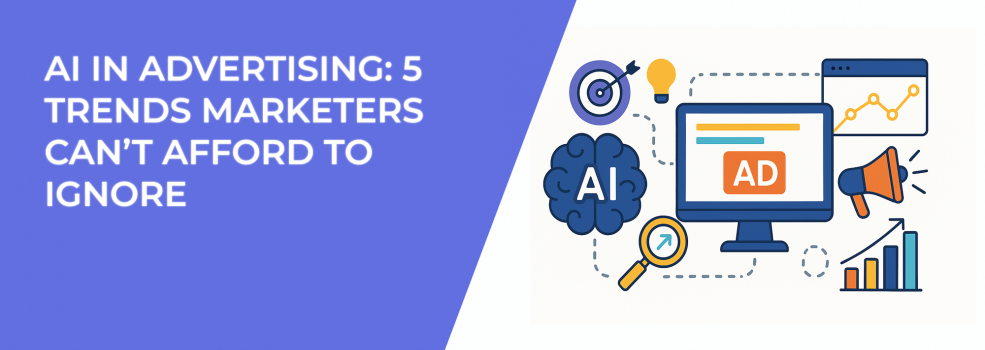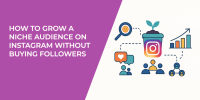Artificial intelligence has moved from being a “tech trend” to becoming the foundation of modern advertising. Brands are no longer asking if AI should be part of their campaigns — they’re asking how fast they can integrate it to stay competitive.
From smarter targeting to personalized ad experiences, AI is quietly reshaping the way marketing works. But here’s the challenge: AI is evolving at lightning speed, and marketers who fail to adapt risk falling behind.
So, what are the top trends in AI advertising right now — and how can you actually put them to work for your business? Let’s break it down.
1. Smarter Audience Targeting
Traditional targeting methods used to be enough — demographics, interests, maybe some retargeting. But consumers are more complex, and their digital behavior changes daily. AI now allows advertisers to go far deeper.
AI tools can analyze purchase history, website browsing patterns, app usage, and even subtle engagement signals to predict who’s most likely to take action. Instead of guessing, you’re using data-driven precision.
How to capitalize on it:
-
Invest in AI-powered ad platforms. Tools like Meta Ads’ Advantage+ or Google’s Performance Max use AI to constantly refine who sees your ads.
-
Build micro-audiences. Break down your targeting into niche groups. For example, a fitness brand could segment into “post-injury recovery,” “yoga enthusiasts,” or “protein snack buyers.”
-
Refresh often. People’s habits shift fast. Set AI tools to automatically update your targeting lists every week or two.
-
Layer insights. Combine AI recommendations with your own customer knowledge — like adding value-based filters such as eco-consciousness or family lifestyle.
For even sharper targeting, explore methods like interest stacking, which let you combine multiple interests into hyper-specific audience segments.
Result: Less wasted spend and more ads reaching the people most likely to engage.
2. Creative That Learns and Adapts
Even the best creative team can’t predict with 100% accuracy which headline or image will resonate most. AI changes the game by continuously testing ad variations and optimizing performance on the fly.
Instead of running a long A/B test, AI can test hundreds of creative combinations instantly and scale the winners.
How to capitalize on it:
-
Upload a variety of assets. Give AI multiple options: short and long headlines, bright and muted visuals, playful and professional tones.
-
Monitor patterns. Don’t just look at which creative wins — analyze why. Did short text work better on younger audiences? Did bright visuals outperform muted ones?
-
Keep feeding AI. Rotate fresh content every two to three weeks. This prevents “ad fatigue,” where audiences get bored and stop engaging.
-
Let AI guide design strategy. Use performance data to shape future campaigns — if AI shows video thumbnails outperform static banners, create more video-first ads.
Not sure what formats to supply AI with? Take a look at The Ultimate Guide to Facebook Ad Formats for inspiration on assets you can test.
3. Predictive Analytics for Smarter Planning
Guesswork is expensive. Predictive analytics lets advertisers see potential outcomes before campaigns even launch. AI analyzes past results, seasonal spikes, trending topics, and competitor data to forecast what will likely perform.
This means you can spend smarter, plan earlier, and reduce wasted budget.
How to capitalize on it:
-
Use predictive tools for budget allocation. If AI predicts Instagram Reels will outperform carousel ads by 30% next month, shift resources accordingly.
-
Plan seasonal campaigns in advance. AI can highlight which keywords or products will trend, giving you time to prepare creative assets.
-
Run simulations. Some platforms allow “what-if” testing — what if you double your budget? What if you add a new channel? Use these to explore possibilities before committing spend.
-
Set alerts. Many predictive dashboards can notify you of sudden changes, like a product trending faster than expected, so you can act quickly.
To make forecasts even more actionable, pair predictive insights with a flexible plan, such as this Facebook ad strategy that adapts to market changes.
4. Hyper-Personalization at Scale
Consumers don’t just expect personalization — they demand it. AI now makes it possible to create thousands of personalized ad experiences simultaneously.
Instead of one-size-fits-all messaging, AI adjusts copy, visuals, and even offers based on user behavior.
How to capitalize on it:
-
Dynamic product ads. Show customers the exact products they viewed, abandoned, or added to wish lists.
-
Behavior-triggered campaigns. If a user abandons a cart three times, AI can serve a gentle reminder with a discount code.
-
Personalized timing. Deliver ads when users are most active — early morning, late night, or even during lunch breaks.
-
Geo-personalization. AI can adapt ads by location, showing relevant offers depending on where users live.
One of the easiest starting points is retargeting. If you’re not doing it already, follow this guide on How to Set Up Facebook Retargeting to start personalizing at scale.
5. Ethical and Transparent AI Use
As powerful as AI is, it comes with responsibility. Consumers are more aware than ever of how their data is being used, and governments are rolling out stricter privacy laws.
Marketers who use AI ethically — and communicate that clearly — will stand out.
How to capitalize on it:
-
Stay compliant. Only use AI tools that follow GDPR, CCPA, and other privacy regulations.
-
Communicate openly. Use friendly phrasing in ads like, “Recommended based on what you love,” instead of overly detailed personalization that feels invasive.
-
Audit your AI. Regularly check how your tools collect and process data. Avoid “black box” systems where you can’t explain results.
-
Make trust a selling point. Highlight your respect for customer privacy in your marketing. Trust builds loyalty faster than discounts.
Example: A subscription brand introduces AI-powered recommendations but adds a clear message: “We respect your data. This ad is based only on what you’ve browsed with us.” Customers feel informed, not stalked — and engagement increases.
Wrapping It Up
AI isn’t just changing advertising — it’s rewriting the rulebook. Smarter targeting, creative optimization, predictive planning, hyper-personalization, and ethical responsibility are now central to every marketer’s playbook.
Here’s how you can get started right now:
-
Run a small AI-powered targeting campaign and compare results to your usual audience setup.
-
Upload multiple creative variations to see how AI optimizes them.
-
Use predictive analytics to plan your next seasonal promotion.
-
Personalize retargeting ads with product-specific offers.
-
Audit your data use and communicate privacy clearly in your messaging.
The earlier you embrace these strategies, the more advantage you’ll build over competitors who are still stuck in “traditional” ways of advertising.
So ask yourself: which AI trend will you test first this month?

